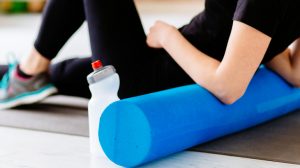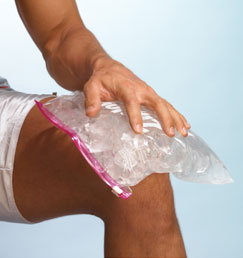No More Back Pain; Easy as 1-2-3
It’s no revelation that the number one complaint we see in our clinic is back pain. Over 85% of us will experience some ‘down time’ with an episode of back pain in our lifetimes. One of the biggest misconceptions is that people believe, perhaps by the previous statistic, that our backs (a.k.a. spines) are brittle. On the contrary, our spines are exceptionally strong and durable structures. The number one recommended remedy for the treatment of back pain is stretching. Makes sense, right? You feel tight? Stretch. Wrong!
The fact of the matter is that research has concluded time and again that our backs need to be more stable and more mobile, not flexible. Typically, when your back is tight, it’s because your brain is telling the surrounding muscles to stabilize or effectively ‘splint’ (think finger splint) the area to prevent further damage. Stretching tissues that are tight will only increase your brains neurological response to tighten. Research has also concluded that flexibility does not equate to less chances for injury. Stability and mobility (of the back) are keys to a healthy spine. Further, understanding that your back is not as vulnerable as you may believe will be your salvation.
Dr. Stuart McGill is a professor at the University of Waterloo and a world renown lecturer and
expert in spine function and injury prevention and rehabilitation. He is constantly challenging the science and forging paths towards literate back health. Among his many achievements in science, he has created what are known commonly as “McGill’s Big Three”. These are 3 exercises he recommends to improve our backs mobility and stability. Granted no regimen of exercise should be cookie cutter, so individual applications will vary. If you feel that you can benefit from these but are concerned about your current back status, consult your physician and talk to him/her about these recommendations by Dr. McGill (side note: if he/she is unaware of Dr. McGill’s work, find another doctor).
Below are the exercises referred to as “McGill’s Big Three”, but there are technically 4 exercises. The first of which is done to determine what your “neutral spine” position is. McGill recommends doing these on a daily basis, just as you would spend time flossing and brushing. If that seems daunting, then you’ve never had back pain. If it seems reasonable, then here’s to never going through it again.
(The following are excerpts taken from Enhancing Low Back Health through stabilization exercise Stuart M. McGill, Professor;Spine Biomechanics, University of Waterloo)
Cat-Camel:
We recommend that the routine begin with the cat-camel motion exercise (spine flexion/extension cycles) to reduce spine viscosity (internal resistance and friction) and “floss” the nerve roots as they outlet at each lumbar level, followed by hip and knee mobility exercises. Note that the cat-camel is intended as a motion exercise – not a stretch, so the emphasis is on motion rather than “pushing” at the end ranges of flexion and extension. We have found that 5-8 cycles is often sufficient to reduce most viscous-frictional stresses.
Curl-up:
The cat-camel motion exercise is followed by anterior abdominal exercises, in this case
the curl-up. The hands are placed under the lumbar spine to preserve a neutral spine posture. Do not flatten the back to the floor. Flattening the back flexes the lumbar spine, violates the neutral spine principle, and increases the loads on the disc and ligaments. One knee is flexed but the other leg is straight to lock the pelvis-lumbar spine and minimize the loss of a neutral lumbar posture. Alternate the bent leg (right to left) midway through the repetitions.
The curl-up is performed by raising the head and the upper shoulders off the floor. The motion
takes place in the thoracic spine – not the lumbar or cervical region. To begin, the hands are
placed under the lumbar region to support a neutral curvature. The exercise is made more
challenging by raising the elbows off the floor. Even more challenging is first performing an
abdominal brace (activating the abdominal muscles), and then curling up against the brace. Hold the posture for 7-8 seconds. Do not hold the breath but breath deeply. Do not increase the challenge by increasing the intensity of the abdominal brace. This will groove desirable motor patterns. Choose the most appropriate level of challenge.
Side Bridge:
Lateral and abdominal muscles (called quadratus lumborum, and the abdominal
obliques) are important for optimal stability, and are targeted with the side bridge exercise. The
beginners level of this exercise involves bridging the torso between the elbow and the knees.
Once this is mastered, and tolerated, the challenge is increased by bridging using the elbow and
the feet. Advanced variations involve placing the upper leg-foot in front of the lower leg-foot to
facilitate longitudinal “rolling” of the torso to challenge both anterior and posterior
portions of the wall, and further groove stabilizing patterns which are transferable to upright tasks.
These are superior exercises in terms of muscle activation, low spine load, and stabilizing
patterns compared to exercises such as performing a sit-up with a twist, for example, that
produce lower muscle activity levels and higher tissue loads.
The beginners side bridge is performed with support from the elbow and knees, while the more advanced variation uses the elbow and feet. Maintain the abdominal brace, a neutral spine and breath deeply.
An advanced level side bridge involves holding the posture on one side for 7-8 seconds and the “rolling”over to the other, and repeating as endurance is increased. It is critical to lock the pelvis to the rib cage, via an abdominal brace, so that the spine remains rigid during the rolling. Finally, add deep breathing while in this posture. The rolling action with the breathing will prepare many people to meet any challenge with a stable spine.
Birddog:
The extensor program consists of leg extensions and the “birddog”. In general, we
recommend that these isometric holds be held no longer than 7-8 seconds. The evidence
supports building endurance with increased repetitions rather than holding time.
The back extensors (both the lumbar and thoracic are important) are challenged with the birddog. But only one half of these muscles are challenged at a time by lifting the alternate arm and leg. This reduces the spine load to about a half of that produced during traditional spine extension exercises such as roman chair extensions. Begin on the hands and knees and hold the posture for 7-8 seconds. Then lower the hand and knee, and “sweep” the floor with them and raise them again for the next repetition. This motion will enhance the stabilizing patterns. Switch sides as appropriate. The abdominal muscle are braced throughout.
To see these exercises in actions, please check out the following video.
Ready to #feelbetter?
You're just a click away from a wicked good massage!
-

60 Minute Massage Gift Card
$170.00 Add to cart -

90 Minute Massage Gift Card
$255.00 Add to cart -

Mini Aer Small Room Air Purifier
$149.00 Add to cart -
Sale!

Thera-Pearl Sports Pack/Hot Cold
Original price was: $14.99.$12.99Current price is: $12.99. Add to cart -

3 Somadome Sessions Gift Card
$135.00 Add to cart -

20 Minute Somadome Gift Card
$45.00 Add to cart -
Sale!

TheraBand® Stretch Strap
Original price was: $19.99.$14.99Current price is: $14.99. Add to cart -

TheraBand CLX Connective Loop
$14.99 Select options
May Flowers-Life Hack
April Showers Bring 5 Flower Hacks What do you get when you combine soda, vodka, apple cider vinegar, hair spray & bleach? Some incredible ways to preserve your flowers this season. Sure, April showers bring May flowers, but mother nature went a tad over board with it this April. So how well are you prepared…
Read More#FeelBetterBoston Recap
#FeelBetterBoston Recap The inaugural #FeelBetterBoston Massage & Community Wellness event over Marathon weekend left people with a smile on their face and genuine appreciation for all that was provided. We knew this being the first time we held such an event that we would be competing with the likes of the infamous BAA Expo and other…
Read MoreHow Do You Roll??
How Do You Roll?? Are Foam Rolling Advocates Stretching the Truth? Foam rolling is one of the most common means of self-care for so many people. It has been thought to provide many benefits such as enhanced performance, improved flexibility and speed, pain reduction and muscle recovery. Often it is referred to as a self-massage technique,…
Read MoreOn the Mend
On the Mend As we quickly approach the holy grail of running events, the Boston Marathon, we start to see a rise in our battered and beaten road warriors. Overuse conditions from months of increased training, acute injuries from falls on slippery roads and chronic aches and pains, all result in the patient surrendering to…
Read MoreLife Hack: Watch the SB LIII on TV, but LISTEN on the Radio
Life Hack: Watch the SB LIII on TV, but LISTEN on the Radio So, our beloved Pats are back in the big game again. I’m not going to relay stats and numbers that drive home the dynasty known as the New England Patriots. We are all aware of them. However, if you want to enjoy…
Read MoreCortisone Injections: Yay or Ney?
Cortisone Injections: Yay or Ney? As massage therapists, we often see patients who have been struggling to find an answer for a particular pain problem. Some of these cases are acute (sudden onset) where others may be chronic (reoccurring over a long period of time). It is not uncommon to have a patient ask us…
Read MoreChiropractic Care at The Boston Bodyworker
Chiropractic Care at The Boston Bodyworker We are excited to announce the arrival of Dr. Jean Kelly of Momentum Healthcare to our office. Dr. Kelly has been practicing in our building for the past 10 years and has been a friend to The Boston Bodyworker for almost 20 years. We are honored to have her…
Read MoreSpine Health: Don’t Ignore It!
Spine Health: Don’t Ignore It! The new year always provides us with the feeling of having a clean slate. Let’s face it, most of us don’t take very good care of our spines. 2019 can be the year that your resolutions come true. This lack of care can lead to physical discomfort and make us…
Read MoreLife Hack: Drink Tea
Life Hack: Drink Tea With the rainiest and most dreary Fall in recent time behind us and winter now in full swing, the need for us to provide optimal care for ourselves is high. Despite American’s love affair with coffee, tea is really the more versatile of the beverages. Most of us reach for a…
Read MoreLife Hack: Forward Head Posture
Life Hack: Forward Head Posture How many times in the course of a day do you roll your shoulders and neck around to alleviate “the spot” in between your shoulder blades. There are several reasons for the discomfort you are experiencing, but one way to resolve this is to do what is known as a…
Read More



